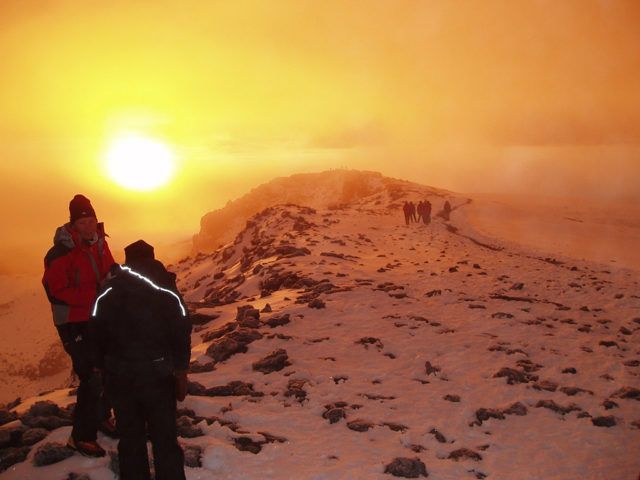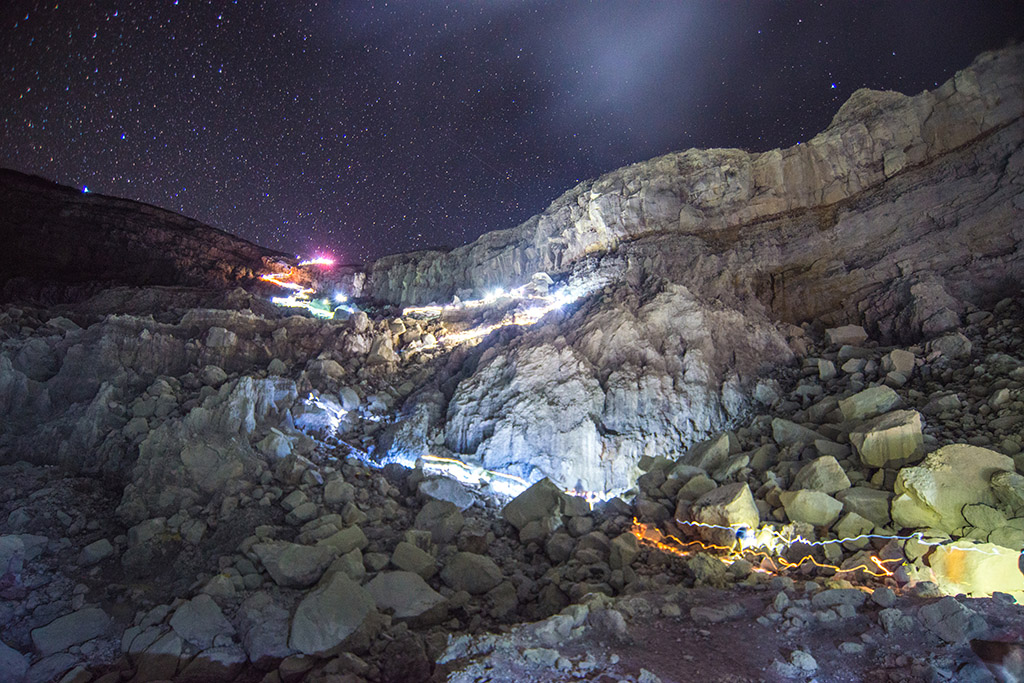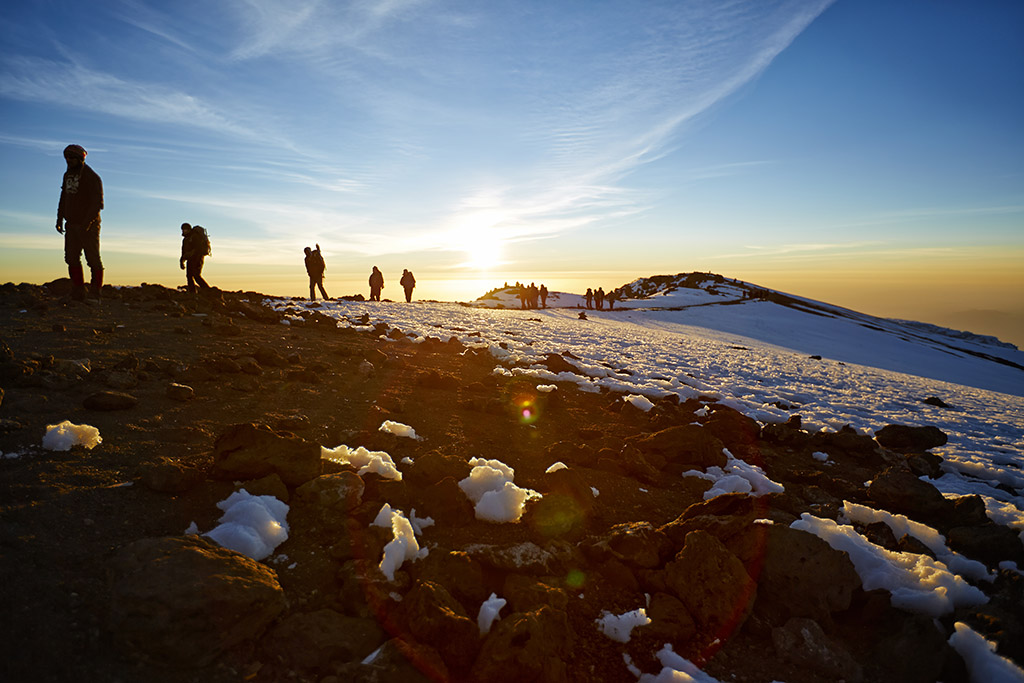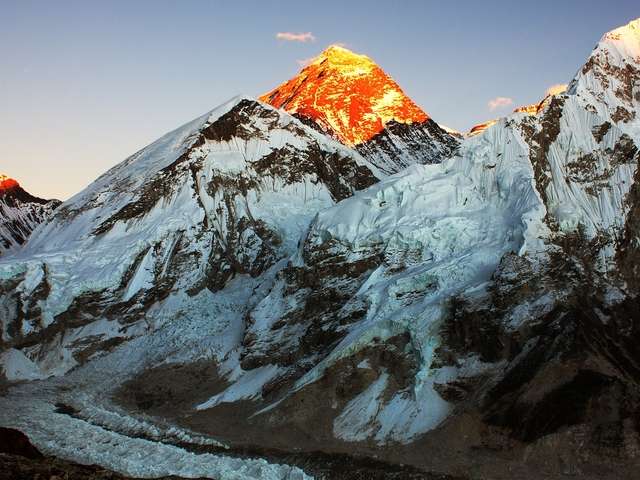
As with every big trek, it’s important to do your research and come physically prepared before joining us on the expedition up Kilimanjaro. Experienced trekkers know that this is the way to maximize the value of your excursion. However, what you may not realize is that Kilimanjaro waits until the last 4,000 feet, when you are dead on your feet and stumbling through the darkest part of the night to truly test you. However, with this guide you can get through the infamous summit night to fulfillingly see morning’s first light breaking over the horizon from atop Uhuru Peak. Here’s a look at what to expect on your summit night.
Stella or Gilman’s?
No matter what route you take through the foothills of Kilimanjaro you will make your approach to Uhuru Peak through either Stella Point or Gillman’s Point, the two connecting paths along the crater rim. Both routes are steep and challenging, however the success rates on summit night are influenced more by the days leading up to the summit rather than the final approach. The majority of people take the Lemosho, Machame, or Umbwe routes and approach through Stella Point. The alternative is to take the Rongai, Marangu, or Northern Circuit to approach through Gilman’s Point. Here is a review of the different routes of Kilimanjaro.

The Start
Every night on your climb your guide team will meet with you to explain what to expect on the next day, and your summit night is no exception. The plan for this night is always a little different with each group, depending on the collective speed and endurance. You’ll have a light snack, a final briefing with the guides, then leave to push for the summit. Most often the group leaves high camp for the summit around midnight, hiking through the darkness to reach the summit or Crater Rim by sunrise. For the first few hours it will be dark and cold, you’ll hike ‘slow and steady’, trying to avoid too many breaks along the way. The trail is a long string of switch backs as you climb in elevation, rather than large stairs as you may find on other trekking routes.
The Approaching the Summit with Proper Pacing
The hike from your high camp to the summit will likely be around 6-7 hours, depending on the group. If you’ve been skimming this article so far, this is the point where you should start reading. Remember Pole, Pole is the strategy here, meaning “Slowly” in Swahili. Some tips for this final section are to focus on your breath and don’t look up. Seeing the mountain “looming” above you in the distance can be discouraging and intimidating. Instead, focus on the path in front of you and keep a steady rhythm. One way to do this is by bringing some good music to hike to. This is an endurance challenge; the right music can make all the difference. To keep the tunes going, protect your batteries by keeping them in a warm place as the cold will drain them fast! Another important rule is to listen to your guides, when the group needs it and the trail allows they will announce a break. Our guides will encourage you to push further and harder than you may think possible while keeping you safe.
Acclimatization & Training
Proper physical training is critical to both summit and enjoy your climb. Whether you’re able to do practice hikes or just spend more time at the gym, getting physically fit is very important. You can see training for Kilimanjaro guide on our website.
Acclimatization is just as important for a successful summit. Getting to the summit safely requires the right itinerary and a reserved pace. You’ll hear “Pole Pole” a lot on the mountain, it is the mantra for climbing Kilimanjaro and has worked for thousands of climbers over the years. You want to give yourself plenty of time as you gain altitude, which is why we recommend longer itineraries like the 7 Day Lemosho Route. The longer you spend on the ascent the higher your likelihood of success. It is important to know that there is no guarantee for acclimatization, and the symptoms can come on suddenly. It is important to have an experienced guide with you that can monitor how you acclimate and help if needed.

What to Eat and Drink
You’ll have a wide range of foods throughout your climb with us. We send professional cooking teams with every climbing group to prepare fresh, hot meals all the way to your high camp. We can accommodate any dietary needs or restrictions or allergies. Our cooks are great at adjusting each climbers menu while still providing a good selection for everyone in the group. See our Whats Cooking blog for more details on what to expect. Water and hydration are very, very important on Kilimanjaro. You will be hiking in the sun for hours each day while breathing heavily in thinner dry air than you’re used to. One of the best ways to combat altitude sickness is to drink more water than you are used to. It is easy to get dehydrated, and the symptoms of dehydration can be confused for altitude sickness.
What to Wear and How to Outfit Yourself for the Summit
As with any high altitude long distance trek it’s important to have some comfortable, waterproof, broken-in hiking boots and moisture wicking wool socks to avoid blistering. When approaching the summit, the temperatures will dip below zero and wearing multiple layers is important. Most climbers wear 4 layers on top and 3 on bottom. Your top layers should consist of a long sleeved base layer, a soft shell, a hooded insulated jacket, and lastly a hardshell. On the bottom wear moisture wicking underwear and long underwear, hiking pants, waterproof pants with an extra pair of fleece pants. For your head bring a warm hat, a buff, and a headlamp. To protect your fingers from frostbite wear two pairs of gloves, the outer layer being waterproof. Due to the high altitude it’s necessary to bring items such as a brimmed hat, sunblock, sunglasses or goggles to protect yourself from the intense rays on the descent.
The feeling of successfully summiting Kilimanjaro is incomparable. Trekking with an experienced company and knowledgeable guides is undeniably the best way to go. With AdventureHero you will be safely able to achieve your dream of reaching the Roof of Africa despite any challenges or concerns that Summit Night brings. We hope this article was helpful and would love to answer any other questions you have about the summiting. Don’t hesitate to reach out! Please like, comment, and subscribe to our mailing list to let us know how we’re doing.


















